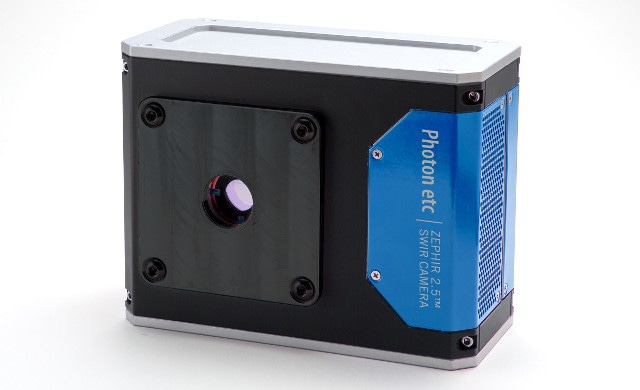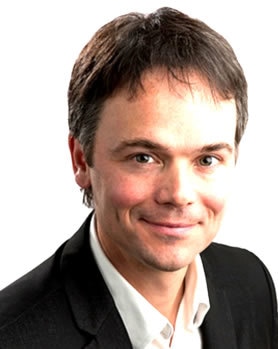Interview conducted by Kalwinder KaurJun 28 2013

Sebastien Blais-Ouellette, CEO and Founder of Photon etc. talks to AZoOptics about Short wavelength infrared camera technology.
You recently released the Zephir SWIR Camera, which is described as the fastest available camera in its class. What is the frame rate of the camera, and how did you achieve it?
Zephir has a frame rate of 346 fps, ideal for industrial applications such as food sorting, but still quite interesting for scientist for other reasons like its spectral range (0.8 to 2.5 um) and low dark current and readout noise.
The frame rate achieved is of course intrinsically related to the choice of sensor and other components, but was also made possible by the electronics we developed, since it allowed us to increase the frame rate while keeping a low readout noise.
The Zephir has a spectral range of 0.8 to 2.5μm. What are the primary applications of cameras in this wavelength range?
The camera was first developed to address industrial markets such as recycling, mining, or the food industry. Of course, due to Photon’s strong background in hyperspectral imaging, many of these applications combine the Zephir camera with our tuneable filter or with a line scan spectrometer.
There are other application in purely imaging mode, which benefit from the speed and sensitivity of the camera. For example, with a frame rate of 346 Hz, it offers an affordable prototyping solution for groups that are building instruments for astronomy or space program.

Zephir SWIR Camera by Photon etc.
How will your users benefit from the enhanced speed of this new model?
Many industrial processes depend on high-speed conveyors to sort different materials. From tea leaf to plastic sorting, almost every industrial process deals at some point with sorting. Thus, most system integrators will be glad to know they can increase the speed of the sorting to increase the efficiency of their production or quality control.
Are there any major development efforts planned for your technology to help expand its area of application and its accuracy?
We are currently working on the extension of the spectral range of the camera to 2.9 microns. This is required for some interesting sorting applications since some materials are more easily recognizable further in the infrared. Still, more generally, the present efforts are focused on bringing production to a larger scale to answer the rapidly increasing demand.
What do you think will be the major advancements and breakthroughs in the field of infrared imaging over the next 5 years?
Infrared detectors have been driven in the past by military applications. Export control has limited the civilian applications to reach its full potential.
With the growing number of industrial and scientific applications, it is probable that more products like ours will appear in the market. The next 5 years will see a substantial decrease in cost and increase in detector size.
What do you think are the key technology and business drivers for the global optical imaging market?
Turn-key solutions for new applications since not everyone is an imaging specialist; real-time analysis and faster cameras with better image quality will also enhance the possibilities of imaging techniques and help its deployment in new areas.
Are there any key technology restraints on the global optical imaging market and how might you be affected by this?
Not that we are aware of. The optical imaging market is driven by increasing needs both in consumer and research markets, so the future should be brighter than ever.
Can you give a brief overview of Photon etc. and your key products?
Photon etc. aims to provide each researcher, engineer and technician with access to the latest innovations in optical and photonic instrumentation.
As pioneers in Bragg-based hyperspectral imaging, we offer state-of-the-art hyperspectral imaging systems for both macroscopic and microscopic applications. Furthermore, our experience has led us to develop high-end infrared scientific cameras and tuneable laser sources.
Where can we find further information on your products and services?
Of course our website is a rich source of information, but you can also contact us directly for more information, [email protected], we are always glad to talk about our technology and even more to learn about new applications we never thought of!
About Sebastien Blais-Ouellette, Ph.D 
An Astrophysicist by training, Sébastien Blais-Ouellette is the President and Founder of Photon etc. While working in the Astronomy Department of the California Institute of Technology (Caltech), he developed a new optical tuneable filter technology that allows unique hyperspectral imaging systems.
With numerous scientific papers and patents, and the management of a high tech business, Dr. Blais-Ouellette balances business development and technological activities.
Disclaimer: The views expressed here are those of the interviewee and do not necessarily represent the views of AZoM.com Limited (T/A) AZoNetwork, the owner and operator of this website. This disclaimer forms part of the Terms and Conditions of use of this website.